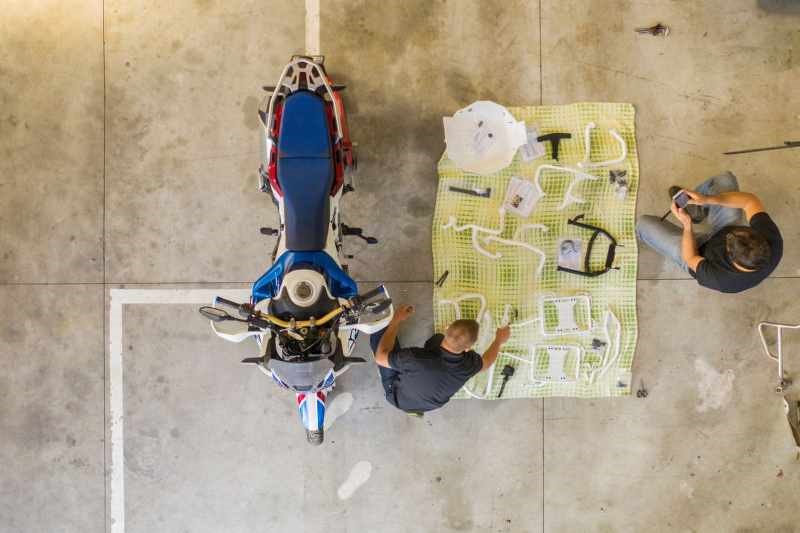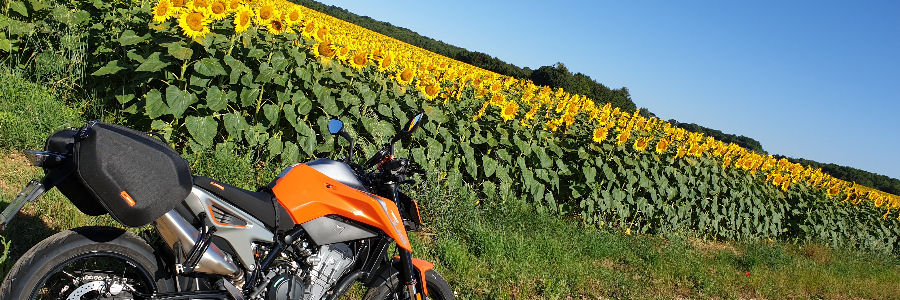
The traction control system is an acronym for TCS. It is a system that controls the traction of the driving wheels of a vehicle. Such systems have been part of the automotive industry for several years. However, in motorcycles, they are in continuous development, even though they have recently made their way to various motorcycles.
A traction control system can make bike riding easier and safer. This system controls the slip of wheels that may occur while acceleration hence providing enough grip to the bikes to stay on the road. In short, a motorcycle traction control system has become a part of our daily riding life as more and more manufacturers are using this system in new models of motorbikes.
Traction has a big role in riding a motorcycle. If it is gone, so are the rider and the bike!
Want to know how does a motorcycle traction control work? No worries. Here, we will show you what a motorcycle traction control system is, why you need it, and how it works.
What is a motorcycle traction control system?
Motorcycle traction control is an active safety system that decreases the chances of a collision or an accident. This system actually avoids the accident because before the accident takes place, it is activated as compared to the passive safety system that is activated during or after the accident.
What are the main types of, traction control system?
There are mainly two types of traction control system:
- Predictive Traction Control
- Reactive Traction Control
A predictive traction control system uses various sensors that read information continuously and take an action before the motorcycle wheel spin occurs. On the other hand, a reactive traction control system reacts or makes a correction when the wheel spin occurs.

How does a motorcycle traction control system work?
While riding a motorcycle, the surface of the road can be wet, slippery, cracked, dry, freshly-paved, or sandy. Similarly, the tires of a bike can be new, old, or not inflated properly. All these and other factors may occur while riding, from the bike rider or the bike. Traction control is there to save the day and keep the rider on the bike while realigning the motorcycle by avoiding losing traction.
The motorcycle traction control system uses various tools to monitor the sudden changes that occur in wheel speeds. These include engine speed and wheel speed sensor, position sensors such as gear position sensor, lean angle, gravitational force and various other dimensions.
By using the sensors and information such as lean angles or gravitational force, this type of system works by controlling the power that is given to the back wheel of the bike. In other words, we can say that this system stops the supply of fuel for the engine.
In addition, it uses sensors that can sense the speed of the bike wheels. By using these sensors, this system checks the speed of the wheels at which they are spinning. Mostly, the loss of traction occurs when there is a difference in speed between the front wheel and the rear wheel.
If the speed of one wheel is faster than the other wheel, the motorcycle traction control system works by detecting the difference of speed using the sensor. It reduces the wheel spinning speed (the wheel that was spinning faster) with the brake to make it come at the same speed as that of the opposite wheel.
The traction control system works on mainly three riding modes. The first one is Street in which there is a smooth path with adjustable speeds. The other riding modes are Sports and Rain. These days, most manufacturers are working on off-road riding mode in which you can get a little more slip with more control.

Do all bikes have a traction control system?
The most prevalent type of motorcycle traction control system is the Anti-lock Braking System (ABS). It is the most commonly used motorcycle traction control. Nowadays, to ensure safety in riding motorcycles, more and more motorcycles are equipped with anti-lock braking systems. There have even been discussions in the past to make ABS (anti-lock braking system) obligatory by law.
This system works on lock-braking technology that does not let the bike wheels to lock. If your motorcycle does not have anti-lock braking system installed in it, you will have less control over your bike. It also distributes the braking force between the rear and front wheel, allowing the bike rider to enjoy a comfortable and safe ride.
Final and Last Thoughts:
So, now we hope that you have come to know what motorcycle traction control is, why it is necessary to be on motorcycles and how it works. A motorcycle traction control system makes riding easy and safe. It can assist the bike rider to stay on the road with enough grip while riding over slippery or off-road surfaces. If you have the right driving skills but do not have enough traction in your bike, you won’t be able to brake, steer, or accelerate effectively unless you are a professional or very experienced rider. Even then, your chances of falling off the bike increase dramatically.
Keep in mind that a traction control system is not a panacea! You should practice and improve your riding skills and depend on your skills much more than on technology.
|
Giorgos Siima is the owner of Siima Motowear, a brand that designs motorcycle gear for adventure, touring and sport riders. His company, Siima MotoWear is specialized exclusively on producing high quality, technical and versatile motorcycle gear. The company is based in Nicosia, Cyprus and offers its products all over the world via free shipping.  |



